Covering the latest, greatest and most interesting portable hi-fi equipment available today at the Kuala Lumpur International AV Show 2018.
MrSpeakers Voce
The Voce rides on a big wave of hype from HeadFi. Who wouldn’t be proud of boss Dan Clark? From humble headphone-modding beginnings to his very own electrostatic setup in a matter of years, that’s a big leap and a huge achievement no matter how you slice it. So let’s slice and dice the new Voce, yes?
Like most electrostatic headphones, Voce hits you with a torrent of detail. Nuances in the music are easily heard and presented, like a cat bringing you its fresh kill. It has very good balance from bass to treble, with a musical slant: notes are precise yet melodious.
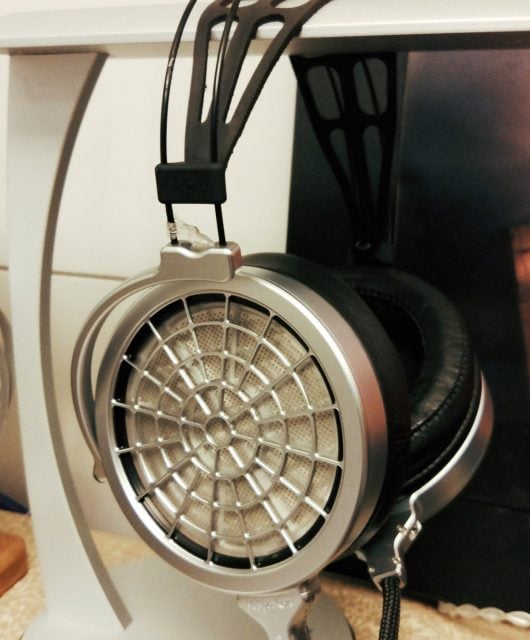
Mr. Monotone
What I did not like, nor expect, is the lack of lightning-fast transients I’ve taken for granted from electrostatic setups. Stax SR-009, Shure KSE1500, Sennheiser HE-1 et al., all had a big wow factor in that not one ounce of detail is spared, and music can transform from soft and smooth to thunderous and roaring in a heartbeat. The dynamism, is what makes me yearn for an electrostatic setup of my own.
Sadly, the Voce falls short in this department. While sounding pleasant, the lack of air and dynamics make this sound unexciting and flat. Maybe I expected too much, but I hope one day MrSpeakers will have something that truly wows me.
Stax SR-L700
Last year the SR-009 left me utterly breathless, reaching for an oxygen mask before I hyperventilate to a hypoxic state. The 009 is flagship material in every respect, but today I explore another old Stax favourite, for people who want respite from the merciless, unforgiving nature of the 009.
When wearing the SR-L700, it makes you look special. They’re called earspeakers for a reason, and the rectangular housings will send weak hearts aflutter with their trademark design. I digress. No doubt, they are a tier below 009 in detail retrieval and transparency, but that’s exactly the point. You don’t have to worry about feeding the L700 inferior recordings and getting an ear-piercing retort.

Like Coming Home
On further listening, it gets pretty addictive. Music is presented to you like a gentle wave, with note grain and grittiness smoothed out. At the same time, instrument timbre is accurate and natural, a delight to listen. Where Voce falters, L700 delivers dynamics in spades, providing excellent resolution and fast transients under a forgiving blanket of warmth and emotion.
The L700 provides a classic analog sound, reminding me of the speaker setup my dad used to have. It sounds easy and effortless, but when you really listen for it, all the details are there, in shades of amber and gold. It’s a signature to come home to and reminisce. Sheer excellence.
Audeze LCDi4
Following-up Stax will always be tough, that’s why I had LCDi4 lined up. Audeze, maker of amazing cans, made an audacious move to release a series of planar dynamic earphones, with the LCDi4 at the top of the stable. Wearing it was an anti-climax, though. No way around it, I hated the fit and fear the plasticky earhooks might snap off due to unbridled user rage.
As for the sound, the first thing you notice is the humongous sense of space and air. “Ooh that’s pretty big”, you say. Stage size is on par with Tia Fourte, but since the LCDi4 has open vents, it’s kinda cheating lol. Bass hits quick and clean with great impact and slam. It’s deft and nimble, appearing when it’s time and tailing off before making much of a mess.
Y U Do Dis?
Mids are forward, perhaps too forward for my tastes. There are good body and clarity to the notes, and vocals aided by the forwardness sound lovely too. However, too much of a good thing means the center image is congested when too much is going on. This might be the infamous 1.5KHz peak I’m hearing, that can only be corrected via EQ or Cipher cable. It boggles the mind how a default tuning can err like this.
A damn shame since the treble is beautiful. Smooth, quick, extended for miles, and sibilance-free. Overall, if it were not for the wonky mids, the LCDi4 would easily be a flagship-beater. The potential is definitely there, and I’m hoping for a better fit and tuning in the next iteration.
Jerry Harvey Audio Layla v1
Not part of the show per se (they did however have Roxanne and Billie Jean), but my buddy brought them over after coveting them for years. I remember the kerfuffle it caused when it was released in 2015, with the huge carbon-fibre shells and unbelievable price tag at the time. Now that flagships regularly hit USD3000-4000 anyway, Layla’s USD2700 price tag is slightly easier to stomach.
Layla is Jerry Harvey’s baby. The enduring flagship since 2015, designed to be the ultimate studio monitor. Released at a time when 12BAs in each shell were unheard of (but now everywhere you see), it was probably too ahead of its time. And now with the flagship-level competition aplenty, let’s see how this old warhorse fares.
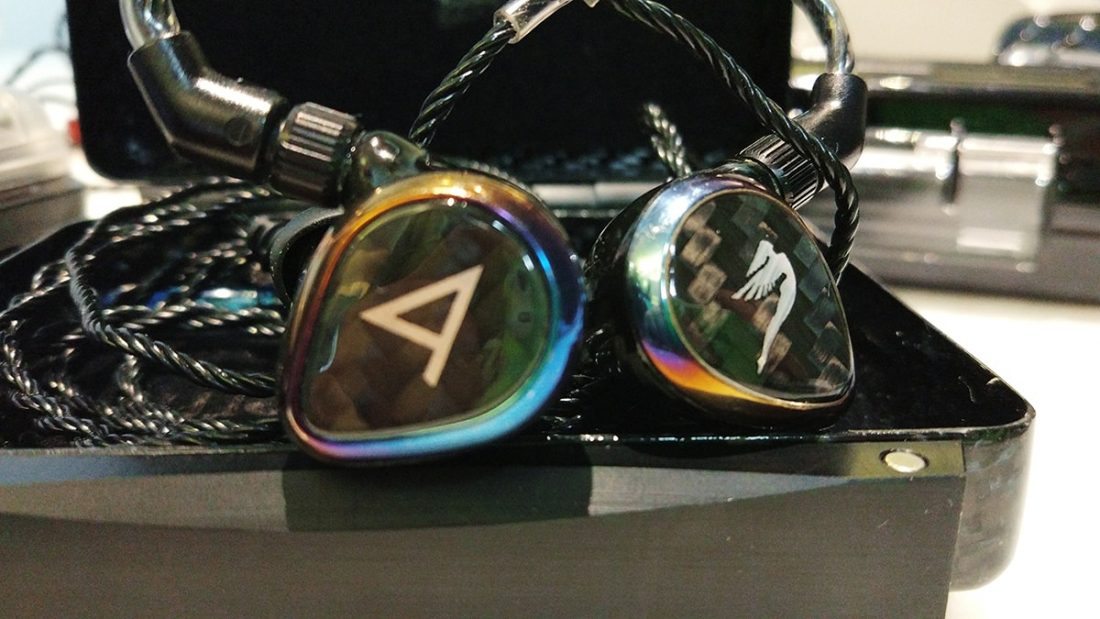
On Your Knees, Boy!
The entire signature comes back to the few keywords I can’t help but retype; Layla is lush, organic, mature, and natural. Instrument timbre is eerily good, as are detail levels. Each note has a nice, meaty presence, realistically fleshed out and then decaying gently. The lush notes do not congest the stage, as Layla is aided by one of the biggest soundstages among IEMs.
The soundstage is stupendously deep and wide, with stellar imaging across all axes. Bass, mids and treble act in unison, with incredible note bloom and texture, effortless extension at both ends, and smoothness that reflects a maturity in tuning that doesn’t need to wow at every turn. This is the perfect antithesis to Fourte’s brash and cocky ways. Ever wondered what liquid honey sounds like? Layla holds the answer.
Jomo Audio Quatre
As you might know, I own and love the Flamenco, which remains one of the highest resolution, most transparent IEMs I’ve heard. Jomo’s house sound focuses on technical ability and deriving enjoyment from hearing it all; every note from attack to release, spaces between the notes, and every harmonic distortion. It’s a bold philosophy that Jomo holds dear.
The Quatre is the top IEM from Jomo’s new hybrid “Melange” line. Featuring 3BAs and 1 DD, a brand new crossover design and four interchangeable Airflow Control Unit (ACU) filters, you can tailor the sound to your liking. For listening, I was stuck with the black “balanced” filter, which had the least bass and most detail.
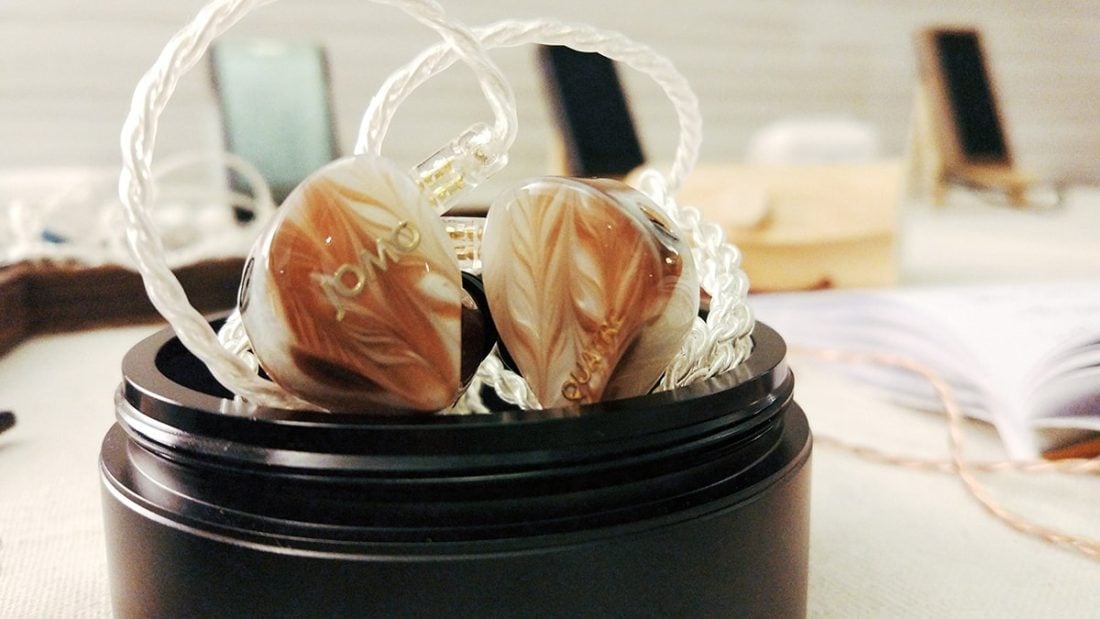
First Girlfriend Experience
Like your first girlfriend, Quatre is fun and energetic. Vocals and instruments are brought a little forward, with excellent balance between body and speed. Treble has a playful tingle to keep things fresh, and adroitly stays clear of harshness. Bass hits quick and precise, with a touch of organic bloom. All around, clarity is omnipresent, with ample black space dancing between notes, creating a wispy airiness to the signature.
After living with your first girlfriend for a while, you discover the soundstage is quite small. This is where the analogy falls apart. Like Flamenco, Quatre is focused and precise, operating in a small, cube-shaped headstage with excellent imaging. The similarities with Flamenco are so apparent I did a small comparison.
Comparison with Jomo Flamenco
Compared with Flamenco, Quatre has warmer, smoother note edges and sounds more organic. This is probably to balance with the rounded bass notes of the dynamic driver. Flamenco otherwise has the extra edge in detail, resolution, articulation and imaging accuracy. Quatre is Jomo’s most musical range-topper yet, but still very reminiscent of Jomo’s much-vaunted house sound.
Jomo Audio Deux
The other hybrid in Jomo’s lineup is the 1DD + 1BA Deux. This was tested with the blue “energetic” ACU (pronounced ah-choo?) filters, which fills the signature with bass. I’m sorry to say I couldn’t get past one song with this.
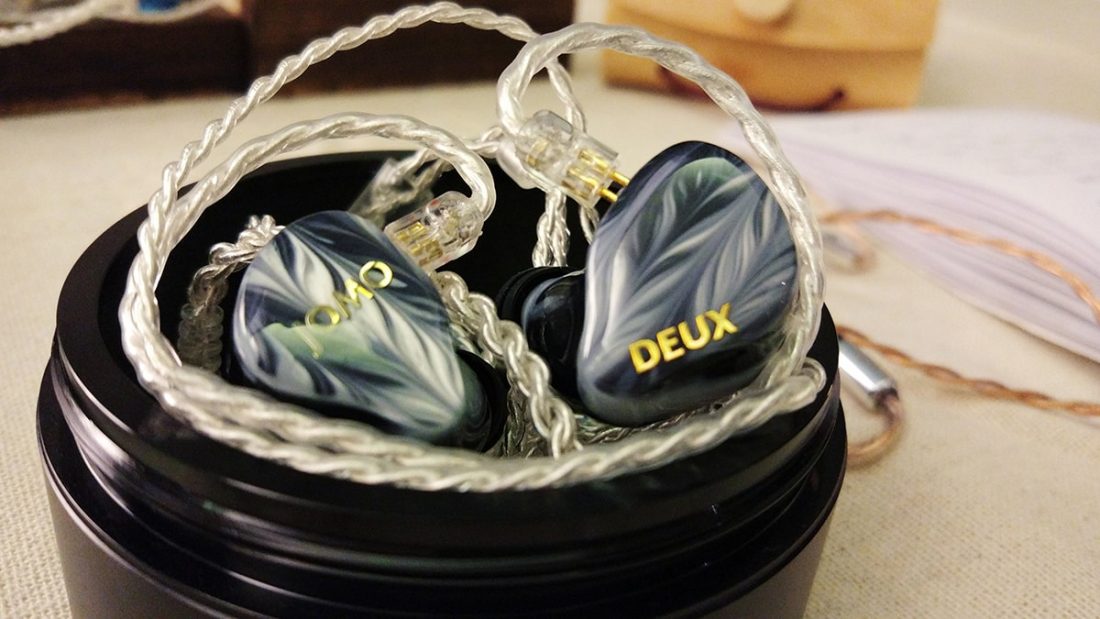
The midbass was too thick and prominent and bled into the mids. The mids while rich and euphonic on its own, struggle to distance themselves from the overpowering bass. Treble seems muted as well. Combine the signature in a small stage and it sounds congested and slow, gasping for air. I can’t appreciate this.
QDC Anole V6
Everytime I attend a show there’s a huge likelihood I end up purchasing the show favourites. Last year I bought the Jomo Flamenco and QDC Gemini, and have been battling crippling poverty ever since. When word got out that QDC will release a new IEM, I flat-out panicked, petrified that they might release a successor to Gemini so soon.
Turns out the new IEM is the mid-range Anole V6, a 6BA IEM with a special gimmick of three tunable switches for different outcomes. While that sounds fun, the switches themselves were too small for my fingers (damn my blasted sausage fingers) and all the staff were busy, so I made do with the default tuning with all switches down, the flattest and most neutral setting.
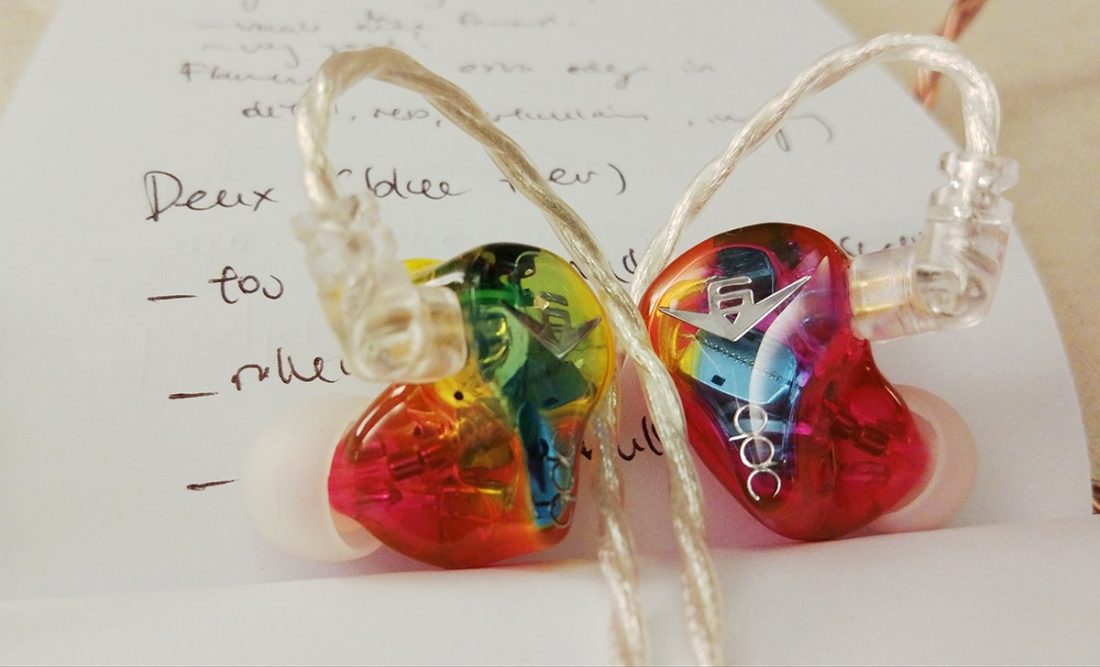
Pretty As A Picture
Have you checked out the shells? Their beauty is beyond words, and the only thing about Anole V6 that left me, ahem, shell-shocked. Unfortunately the signature is not to my liking. The bass, while full of texture, is polite and flat; the mids, while sounding euphonic (A QDC trademark) and forward, are thinnish and strangely detached from the listener. The treble is smooth, but sound safe and rolled-off, lacking excitement.
There is a good amount of clarity and transparency, and overall it is an able performer. I just suspect that the neutral setting is not for me. I like some meat in my er, meat.
As the sun set and nightfall beckons, hordes of tired audiophiles gradually shifted towards the exit. My ears were tired and wanted some silence. As I was about to leave, le wild beautiful IEM caught my eye.
Acoustune HS-1551CU
I’ve been wanting to listen to this one for yonks, so I willed myself to the listening table yet again. The Acoustune rep was supremely accommodating, given the time of day. The 1551CU garnered some fame for the outstanding shell design and a natural tuning from a single dynamic driver. The IEMs also come with resplendent cables with original Pentaconn jacks. It’s sheer quality.
Look at the shell. Feel it, learn from it. Exchange stories with it. It’s top-tier construction all the way. There might never be another IEM as alluring as this one. I could touch it all day like… let’s not go there.
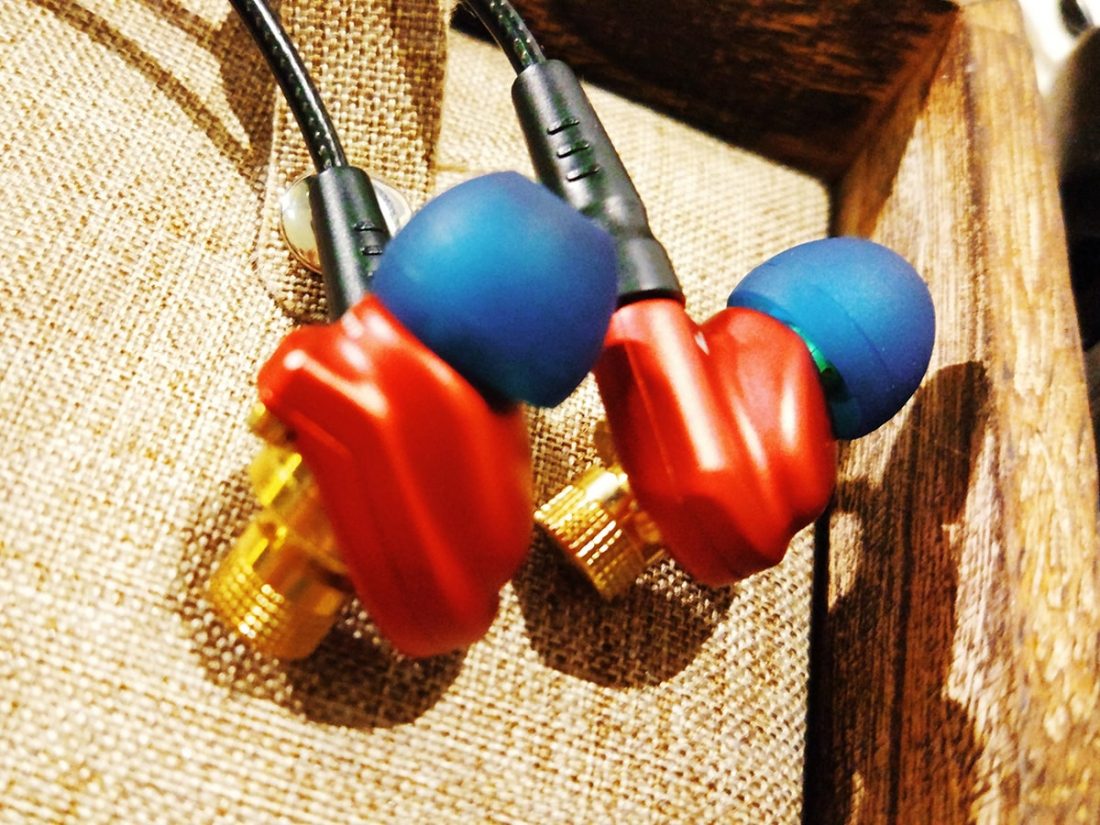
Teddy Bear Attack
As for the sound, it overwhelms me like a hurricane to the senses. All I hear is richness, warmth and a full-bodied presentation. It would’ve sunk where it stood, if not for the wide soundstage working overtime to separate the elements of the music. Notes are organic and have an analog feel all over it, starting and ending beautifully-rounded, like a teddy bear attack.
Bass and mids are front and centre, while the treble is pulled back. The balance of the tuning is undeniably shifted to note thickness and fullness, sacrificing note texture and detail for a uniformly warm sound. It is too warm and coloured for my liking, but I can easily imagine analog fans sinking into the 1551CU for a session of pee-inducing relaxation.
Acoustune HS-1650CU/HS-1670SS
“Hey you, handsome, come!” The Acoustune rep (who came all the way from Japan) signalled me for more. Acoustune had on display, two prototypes that will be released in September. The tuning has already been finalised, and he wanted my feedback. Probably due to my fame as a reviewer, or more likely because I was the only guy at the Acoustune table now lol.
These twins sport the same dynamic driver, which underwent some upgrades and refinements from the previous generation. The only difference between them is the brass chamber for the 1650CU, and a stainless steel chamber for the 1670SS. The 1650CU caught my eye immediately, with its mini-Focal Utopia appearance begging for a listen.
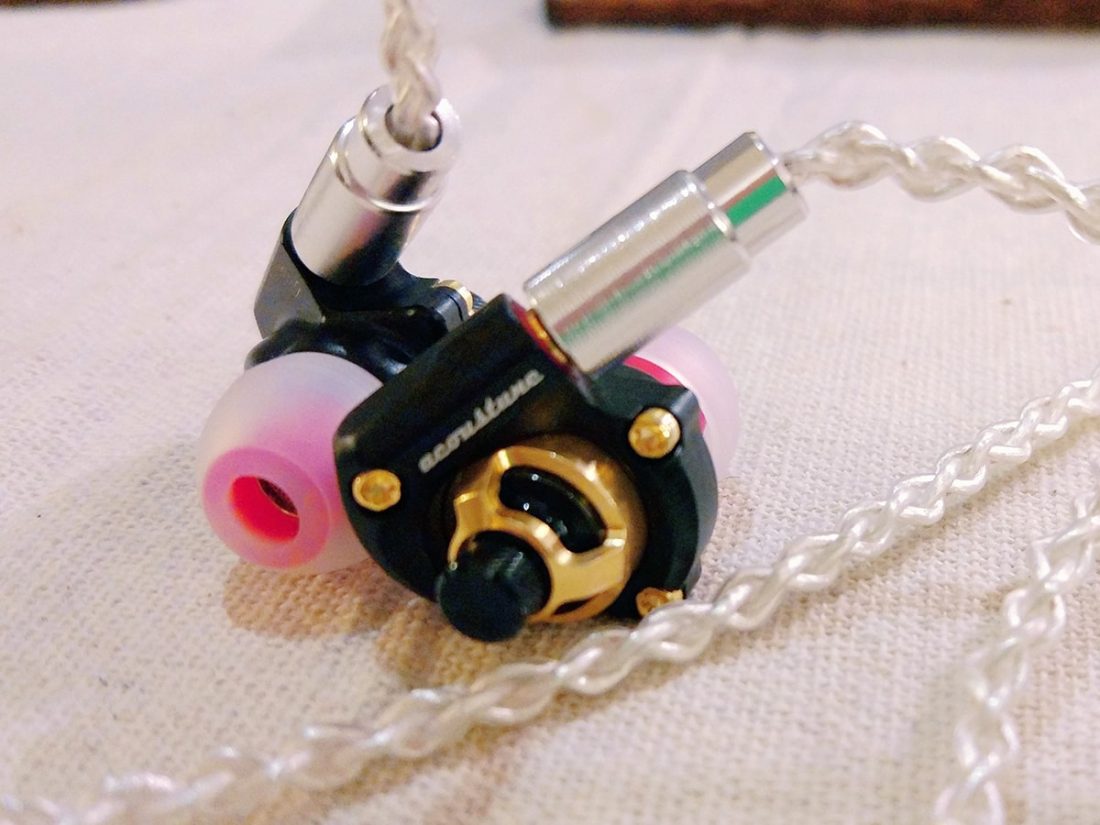
The Dynamic Duo
Now this is more like it! The bass, equally impactful as the 1551CU, is now nice and TIGHT, allowing an abundance of bass air to uh, aerate (what else can it do) the signature. Decay is fast and fluttery, and the thinner notes did wonders for the signature. Now free from bloat, I was able to appreciate the lovely bass texture and detail. It’s still very natural-sounding and punchy. What a fun bass!
The mids, as before are brought slightly forward, bringing attention to the fluid, natural timbre and syrupy vocals. Female vocals work a treat, I requested some alone time with the prototypes but no dice. Treble is airy, sparkly, well-extended, and in line with the rest of the signature. I have hit gold! What a fun, dynamic and punchy signature to be enjoyed.
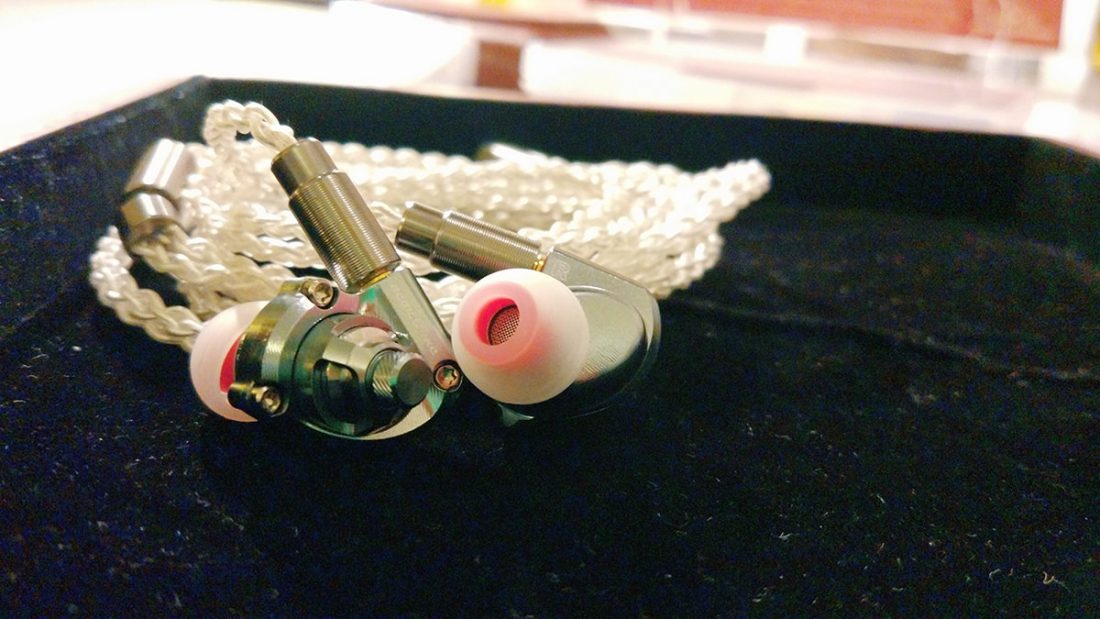
The Brothers of Destruction
The 1670SS is very similar-sounding to the 1650CU, except that details and resolution are given a noticeable bump. Note texture is so real you can palpate it, and the already excitable signature veers towards a slight brightness. The only downside to this is the sometimes-tizzy treble. If you want your detail, you should be able to handle the highs too.
In both IEMs, the stage is very wide, and deep enough for a 3D presentation. Separation and imaging are brilliant as well, but all the technicalities exist to serve the vibrant and fun signature that places you in the middle of a studio, making magic. Amazing flagship stuff by Acoustune! I whipped out my wallet only to be told to wait for its official release. Crud.
The shocker for me is they will be priced at around USD700-800 which is very reasonable for a flagship-tier sound. My wallet is silently waiting.
You know how, when the venue is about to close but you defiantly stay on, only to be dragged by the guards to the nearest exit? While being dragged along, I managed to collect a few more, rapid-fire impressions. My last stand lol.
Rhapsodio Zombie
I love Rhapsodio, a boutique IEM company from Hong Kong making top-tier earphones. I had both Solar and Galaxy V2 which were different enough to have their own followings, and showed off the boss Sammy Mak’s adept skill in tuning for the masses.
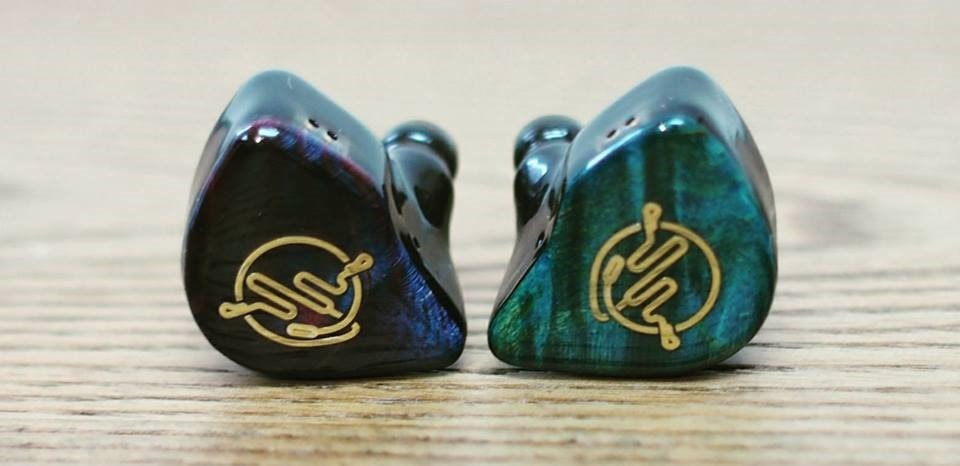
The Zombie is an 8BA + 1DD hybrid that aims for the skies. The signature reminds me of a Solar (a warm and natural IEM) with more bass and more treble. It’s too V-shaped for my liking, and the midbass absolutely overwhelms the rest of the signature. The strident treble, meant to bring balance to the force (sound), was too bright. Perhaps it was named Zombie because it was dead on arrival? Sorry about that.
Rhapsodio Saturn
The Saturn fared even worse. Rhapsodio’s mid-tier offering is a single dynamic driver that sounds all kinds of bassy. The bass-forwardness and bleed, coupled with a distinct lack of clarity and muddy note definition from the mids upwards, turned me off immediately. Sammy is truly a great guy, and already hard at work with new top-tier stuff, like the upcoming Eden. I wish him all the success in the world.
KuraDa KD-E1 Quartetto
Diversity counts, and one staff member thought maybe I’d appreciate this newly-released unicorn from Japan. Virtually no information exists online for the Quartetto, I’ve checked. It does come with a ~USD700 cable from Brise Audio as stock, so it’s always worthwhile to listen to something expensive.
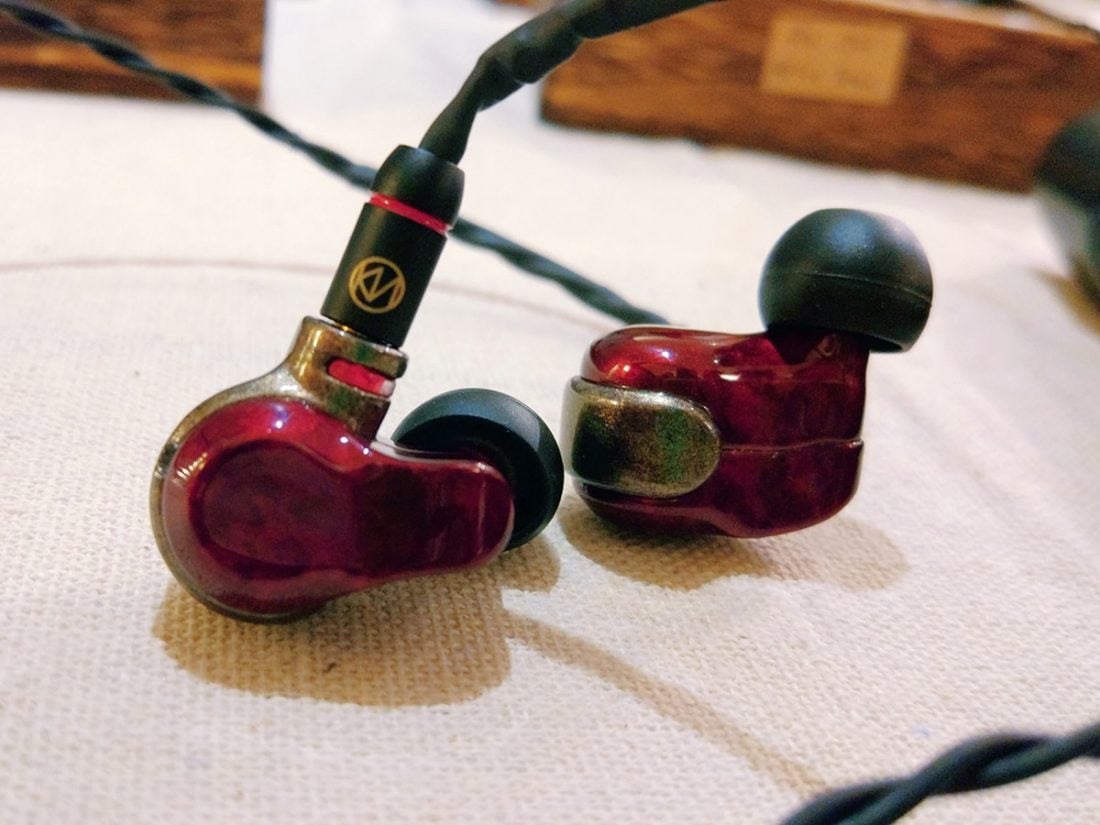
Japanese Unicorn
Quartetto is a 2BA + 2DD monitor which aims for maximum enjoyment out of music. It sounds well-balanced with equal amounts of bass, mids and treble. You already know the 2DDs spell trouble, and sure enough, the subbass focus has enough visceral impact and slam for a thumping good time.
The mids are coloured with a warm, sweet tinge, alluring you with intimacy. It’s neither reference nor neutral, but the colouration is well done. and Treble is smooth and even with just a touch of sparkle, before rolling off gently. The signature is very easy to like, just don’t choke on its USD1980 price tag.
IMR Acoustics R1
Last one. A steampunk enthusiast’s dream, I was pulled in by the design of the R1. The pink filter was the show favourite which has rich mids, controlled highs and impactful (but not maximum) bass. The ports are open for the biggest and airiest soundstage possible. The R1 sounds meaty, forward and musical, with a definite V-shape.
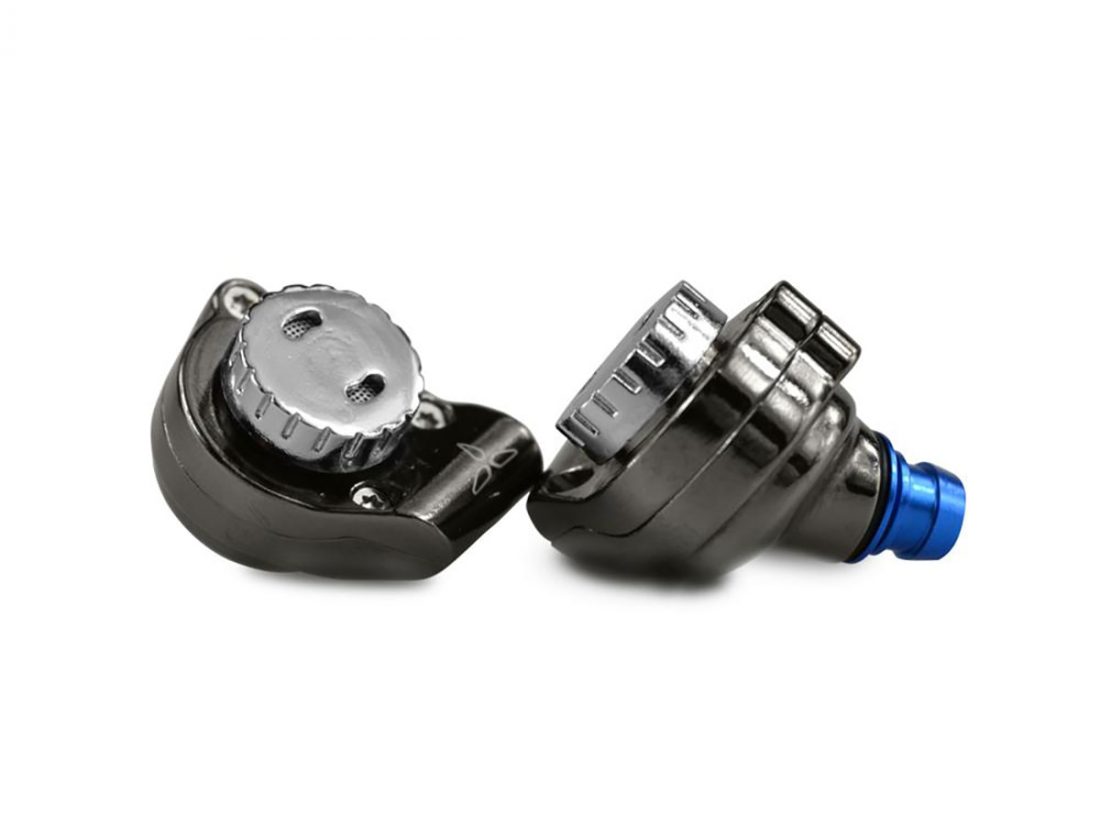
The bass is the best part of the R1. Quick, impactful and intricately layered, the bass imbues a feeling of warmth with its airiness. Mids are unfortunately overshadowed by the top-tier bass, sounding slightly muffled and hollow but maintaining an organic sound. The treble, in turn, is fun and sparkly. I can imagine many people liking this signature and fine-tuning it with filters of their choice.
It was dark outside, everyone in attendance made their way to the exit. I stayed past the closing time of 7.30pm along with a few other hardcore audiophiles. It was a tremendously fun and tiring day, with helping upon helping of generally good audio. As I made my way to the exit (more like thrown out lol), I made sure to thank the staff for their courtesy and kindness.
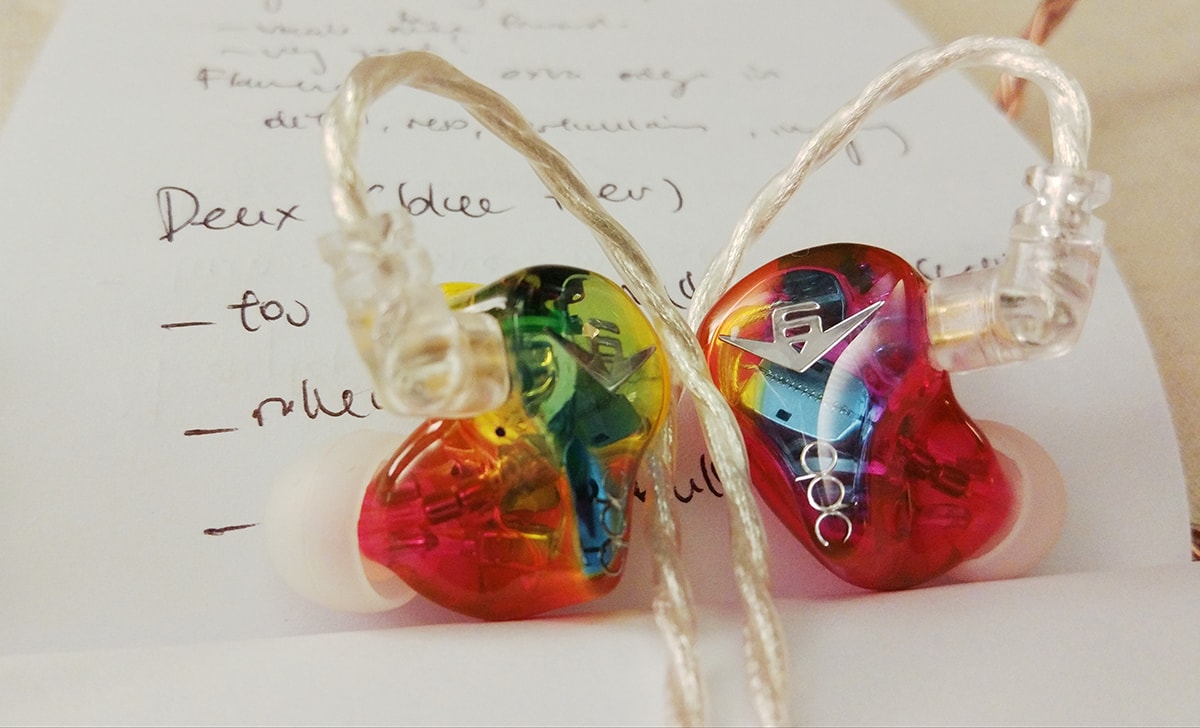
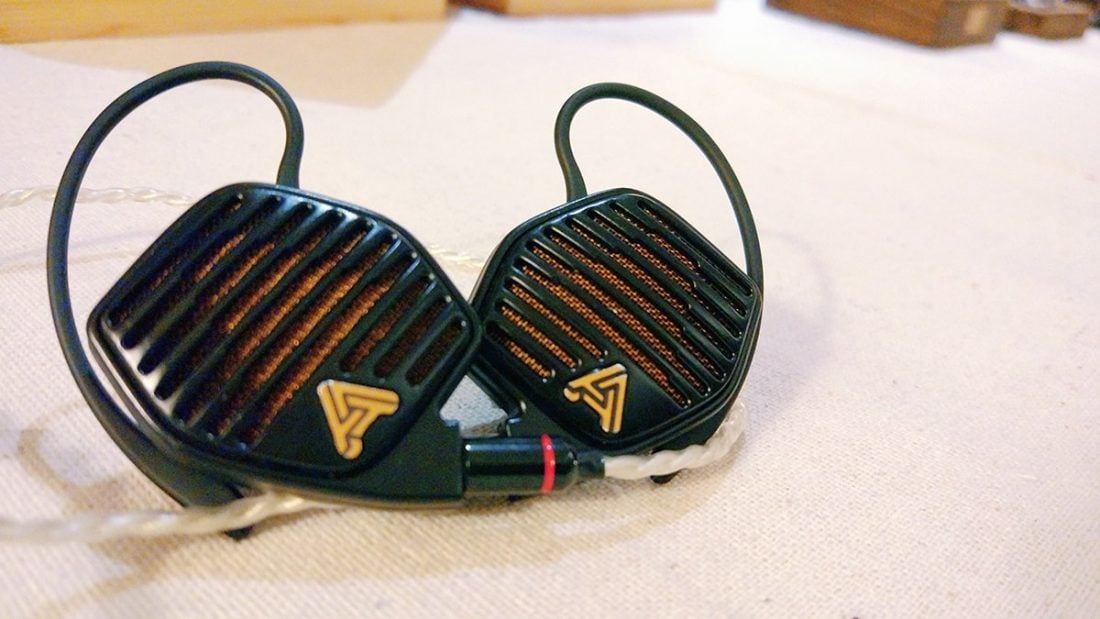
Hello Lau excelent reviews ; but tell me the acoustune 1650cu is better than the acoustune 1670ss ? And is better than kaiser encore what level have? thank you for your answer